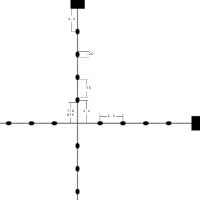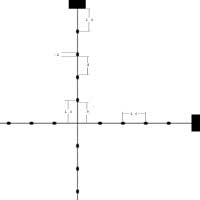

|
Size of target (units of measure) --------------------------------------- X 1000 = Range to target (units of measure) Size of target (mils) |
|
Size of target (inches) X 27.78 ------------------------------------ = Distance (Yards) Size of target (mils) |
|
Size of target (inches) X 25.4 ------------------------------------ = Distance (Meters) Size of target (mils) |
| Federal GMM 175gr 2600fps - 10mph Crosswind | ||
| Range | inches | mils |
| 100y | 0.6 | .2 |
| 200y | 3.0 | .4 |
| 300y | 7.0 | .7 |
| 400y | 12.7 | .9 |
| 500y | 20.8 | 1.2 |
| 600y | 31.4 | 1.5 |
| 700y | 44.3 | 1.8 |
| 800y | 60.1 | 2.2 |
| 900y | 79.1 | 2.6 |
| 1000y | 101.0 | 2.9 |
| Federal GMM 175gr 2600fps - 500y Zero | ||
| Range | inches | mils |
| 100y | 12.7 | -3.5 |
| 200y | 20.2 | -3.0 |
| 300y | 22.2 | -2.0 |
| 400y | 15.8 | -1.0 |
| 500y | 0.0 | 0.0 |
| 600y | -27.1 | +1.5 |
| 700y | -66.4 | +3.0 |
| 800y | -121.1 | +4.5 |